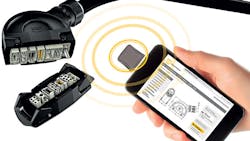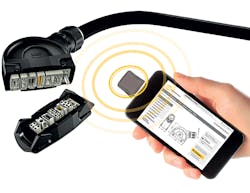Interview: The Growth of IIoT and the Role of Connectors
This file type includes high-resolution graphics and schematics when applicable.
I joined HARTING in December of 2008 as head of HARTING’s North America sales and business operations and was appointed the president and CEO of HARTING Inc. of North America in 2013. The last years were very exciting as we gained significant market share and triple digit revenue growth by designing and executing an extensive restructuring process and business development plan. We focused on educating the industry on new technologies which resulted in a shift to connectorization in industrial applications. Today HARTING is positioned as one of the leaders in industrial connectivity across North America.
How long has HARTING been a leader in the world of heavy duty industrial connectors?
HARTING was first established in 1945 in Minden, Germany. Now HARTING Technology Group is a global connectivity company and is still owned and managed by the HARTING family, with 13 manufacturing facilities in eleven countries and subsidiaries and branch offices in 43. While the company has diversified into device and PCB connectivity, Ethernet, RFID, and other future-looking technologies, industrial connectivity remains the main focus. Vertical integration allows the company to have in-house-expertise in various interrelated technologies such as PCB simulation and metallurgic. We have taken a step beyond connectivity where we were able to design and manufacture custom and complete solutions to our customers such as connectorized enclosures, cable assemblies and backplane systems. That kind of commitment has made it the world leader in heavy-duty connector sales. HARTING spends an amount equal to about 6% of its annual sales on R&D. It holds more than 1,700 patents, 100 registered designs, and 760 trademarks. In Europe, Asia and also in some North America markets Han is used as a noun, like Coca-Cola or Kleenex; another way of saying “heavy-duty connector.”
What industries use HARTING products?
HARTING connectors are dominant in the machinery, robotic, and transportation industries, from automobile assembly plants to high-speed trains. HARTING’s products include electrical and electronic connectors, device terminations, backplanes, network components, as well as cable harnesses for networks and machinery, and for power and data application in factories.
HARTING hosted an Industrial Internet of Things (IIoT) Panel in the fall of 2015 to help introduce the topic to its employees and customers. How does HARTING see the future of IIoT?
The Internet of Things is swiftly gaining momentum in North America’s industrial markets. It’s primarily driven by the need for automation, smart-factory (predictive maintenance), and communication between the factory (hardware) and IT (software). U.S. companies recognize the opportunity to improve efficiency through automation of the manufacturing process. Companies are beginning to realize the opportunity for improved productivity and cost savings by adopting plug-and-play industrial technologies. Entry-level contractors as opposed to highly skilled electricians/technicians, which allows for higher efficiency and cost savings, can easily install products. Furthermore, these products will eliminate or reduce the need for additional components such as rigid or semi-rigid conduits that protect point-to-point wiring from damage that would require extensive re-wiring.
What role does HARTING have in the IIoT world?
Industry 4.0 is changing the world of manufacturing and this major technological shift is bringing change to manufacturing systems and industrial devices. HARTING connectors are accompanying these changes—by simply being integrated in industrial devices. The HARTING approach remains unique: taking a standardized work plan on the basis of Business Process Model and Notation, and using it directly to control the work sequences of a machine. What is new is the higher degree of modularization within the cells, on the basis of production components with the standardized interfaces of the Han-Modular connector system. This fulfills the basic requirements for the implementation of plug-and-play applications in the future. Extended machine visualization allows improvements in direct control. The whole plant is now connected over the HARTING infrastructure boxes, which provide the connections to the lifelines of power, signal, data, and compressed air for each production cell, and monitor the energy flow. In the future, the modules will offer a human-machine interface to support helper functions for increasing flexibility and configuration in a personalized and efficient form. In this way, it should be possible to combine flexible mechatronic components in production lines without the need for any manual programming on site.
What research efforts is HARTING participating in to develop IIoT technology?
HARTING is a member of the Industrial Internet Consortium (IIC). This association aims to develop Internet technologies for industrial deployment. It was founded in March 2014 by AT&T, Cisco, General Electric, IBM, and Intel. Over 200 companies, including HARTING, belong to the organization worldwide.
HARTING also participates in the joint project “Fleximon—flexible assembly concept” with autonomous mechatronic production components. The project forms part of the “excellence cluster competition" of the German Federal Ministry for Education and Research in the framework of the Hightech Strategy 2020 for Germany. HARTING and the University of Bielefeld (CoR-Lab & Citec) jointly developed the “FlexiMon” plant. At the plant, one can experience how modification of work scheduling on the level of the ERP system leads to changes in the behavior of the plant, without the need for any explicit programming.
What new IIoT products are coming to 2016 from HARTING?
As machines become serviceable, there is the need for a plug-and-play solution so that companies can quickly service and maintain the machines. The Han connector solutions for PCBs form the perfect bridge between industrial devices and leading installation standards. It is now possible to have a combination of power, signal, and data in only one connector. PCB adapters from the Han-Modular program can supply the PCB with currents of up to 40 A. This direct contacting is even possible with semi-flexible PCBs from HARTING; using both together saves considerable space and assembly costs. The Han-Fast Lock enables even more amps—up to 60 A to be precise. The PCB connector is simply inserted into the drilled hole provided for the contact, locked into place with a latching pin, and released again if necessary. HARTING is in the process of developing additional modules to provide higher density. This also opens another door to the ones who are not using connectors currently.
HARTING is offering the HARTING IIC Modular Industry Computing Architecture (MICA). MICA makes it possible to temporarily save, evaluate, and process data in the immediate vicinity of machinery and equipment. Its modular open platform allows for customization of the HARTING IIC MICA with custom hardware, software, and interfaces to suit your individual requirements for Integrated Industry.
HARTING’s Han connectors can now also be equipped with RFID transponders in order to link information and data from real components with the virtual world. Han connector systems offer users optimum protection against external physical influences. This is made possible by the use of materials and seals that are UV- and ozone-resistant and which function within a temperature range of -40° to +125°C. Impermeability to moisture, humidity, dust, and dirt must also be assured throughout the connectors’ useful life. Consequently, HARTING connectors are designed to meet IP 65/67. These requirements not only apply to connectors, but to RFID transponders as well. The integration of an RFID transponder in the rectangular connectors now permits the development and use of the full range of the identification of specific data, through to the ordering of spare parts, all in a convenient, quick, and reliable manner. Thanks to the RFID transponders and their software functions, the HARTING Technology Group has now integrated its proven connectors with business database structures—all the way through to the ordering of replacement parts.



